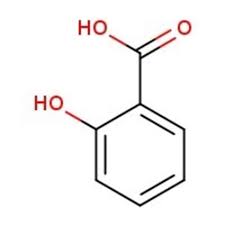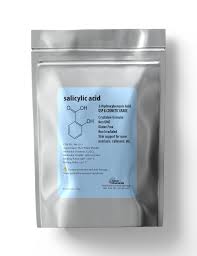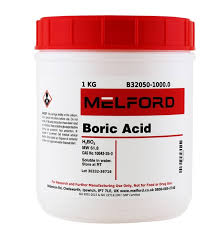Description
Everything You Need to Know About Salicylic Acid
Salicylic acid is a popular ingredient in skincare, pharmaceuticals, and personal care products. Its versatile nature and proven benefits make it a sought-after compound for various applications. Whether you’re a skincare enthusiast or a healthcare professional, understanding salicylic acid’s content, benefits, and usage is essential. Let’s explore this fascinating compound in detail.
What Is Salicylic Acid?
Salicylic acid is a beta hydroxy acid (BHA) renowned for its keratolytic and anti-inflammatory properties. Chemically, it is classified as 2-hydroxybenzoic acid, and it naturally occurs in plants such as willow bark, wintergreen leaves, and other botanical sources. In the modern world, salicylic acid is synthesized for commercial use, ensuring purity and consistency.

This compound has been used for centuries, initially as a natural remedy for pain and fever. Today, it is best known for its role in skincare, especially in treating acne, psoriasis, and other skin conditions. Its ability to penetrate pores and exfoliate dead skin cells makes it a vital ingredient in many formulations.
The Chemical Composition and Purity of Salicylic Acid
The quality of salicylic acid significantly impacts its effectiveness and safety. When purchasing salicylic acid for e-commerce, it’s vital to understand its chemical purity. Typically, pharmaceutical-grade salicylic acid boasts a purity level of 99% or higher, ensuring minimal impurities and maximum efficacy.
Manufacturers often provide detailed Certificates of Analysis (COA), which specify the chemical composition, impurities, and physical properties. These certifications are crucial for buyers to verify that they receive high-quality, safe products suitable for skincare, therapeutic, or industrial applications.
Content and Concentration of Salicylic Acid in Products
The concentration of salicylic acid varies depending on the application and formulation. For skincare products, especially over-the-counter (OTC) treatments, typical concentrations range from 0.5% to 2%. These levels are effective in exfoliating and unclogging pores without causing excessive irritation.
In medicinal formulations, such as medicated creams or gels, concentrations can go up to 3% or higher, often under medical supervision. Industrial applications, including pharmaceuticals and manufacturing, may use higher concentrations, but these are strictly regulated.
For e-commerce purposes, understanding the content is essential. Customers should look for transparent labeling that clearly states the percentage of salicylic acid. Higher concentrations generally deliver more potent effects but may also increase the risk of skin irritation, especially for sensitive skin types.

Benefits of Salicylic Acid
1. Effective Acne Treatment
Salicylic acid is widely recognized for its ability to treat acne. It penetrates deep into the pores, dissolving the debris and excess oil that clog hair follicles. As a result, it helps prevent and reduce acne breakouts. Its anti-inflammatory properties also soothe inflamed skin, reducing redness and swelling.
2. Exfoliation and Skin Renewal
One of the key benefits of salicylic acid is its keratolytic action. It promotes exfoliation by loosening and shedding dead skin cells from the surface. This process encourages skin renewal, resulting in a brighter and smoother complexion.
3. Treats Psoriasis and Seborrheic Dermatitis
Salicylic acid is effective in managing scaling and thickened skin associated with psoriasis and seborrheic dermatitis. It helps soften scales and reduces inflammation, providing relief from discomfort.
4. Unclogs Pores and Prevents Future Breakouts
By penetrating into the pores, salicylic acid dissolves the debris that can lead to blackheads and whiteheads. Regular use maintains clear skin and prevents future breakouts.
5. Anti-Inflammatory and Antiseptic Properties
Beyond its exfoliating capabilities, salicylic acid exhibits anti-inflammatory effects, reducing redness and swelling. Its antiseptic qualities also help prevent bacterial infections, especially in acne-prone skin.
How Salicylic Acid Is Used in E-commerce Products
In the e-commerce landscape, salicylic acid appears in a variety of skincare products, including cleansers, toners, serums, spot treatments, and medicated creams. When consumers browse these products, understanding the formulation and concentration helps them make informed choices.
Skin Care Products
Cleansers and Foams: These contain lower concentrations (around 0.5%) suitable for daily use. They gently exfoliate and help prevent acne formation.
Toners: Often formulated with 1% to 2% salicylic acid, toners help control oil and improve skin clarity.
Serums and Spot Treatments: Higher concentrations, up to 2%, are used for targeted treatment of stubborn acne lesions.
Medicated Creams and Gels: With concentrations reaching 3%, these are typically recommended for more severe skin conditions and should be used under supervision.
Industrial and Pharmaceutical Applications
Beyond consumer skincare, salicylic acid is a vital ingredient in pharmaceutical formulations for treating skin disorders. It’s also used in manufacturing the precursor to aspirin and other medicinal compounds.
Safety and Precautions When Using Salicylic Acid
While salicylic acid offers numerous benefits, safety remains paramount. Overuse or incorrect application can lead to skin irritation, dryness, or allergic reactions. Therefore, it’s crucial to follow the instructions provided with each product.
Patch Testing
Before incorporating salicylic acid products into your routine, perform a patch test. Apply a small amount on a discreet skin area and observe for any adverse reactions over 24 hours.
Avoid Use on Sensitive Areas
Steer clear of applying salicylic acid on sensitive regions such as around the eyes, mucous membranes, or broken skin unless explicitly directed.
Use Sunscreen
Exfoliating acids increase skin sensitivity to UV rays. Always apply broad-spectrum sunscreen during the day to protect your skin.
Consult Healthcare Professionals
If you are pregnant, nursing, or have pre-existing skin conditions, consult a dermatologist or healthcare provider before use.
How to Choose the Right Salicylic Acid Product
Selecting the appropriate product depends on your skin type, condition severity, and personal preferences. Here are some tips:
Identify Your Skin Type: If you have sensitive skin, opt for products with lower concentrations (0.5%) and gentle formulations.
Check the Concentration: Higher concentrations are more potent but may cause irritation. Beginners should start with lower percentages.
Read Labels Carefully: Ensure the product clearly states the percentage of salicylic acid and other ingredients.
Consider Additional Ingredients: Look for complementary ingredients such as niacinamide, witch hazel, or moisturizers that can enhance benefits and reduce dryness.
Review Customer Feedback: User reviews can provide insights into product effectiveness and tolerability.
Frequently Asked Questions About Salicylic Acid
1. Is salicylic acid safe for daily use?
Yes, when used in recommended concentrations, salicylic acid is safe for daily use for most skin types. However, overuse may lead to dryness or irritation, so it’s important to follow product instructions and adjust frequency as needed.
2. Can salicylic acid be used with other skincare ingredients?
Salicylic acid pairs well with ingredients like benzoyl peroxide, niacinamide, and hyaluronic acid. However, avoid combining it with other strong exfoliants or irritants unless advised by a dermatologist.
3. How long does it take to see results from salicylic acid?
Typically, users notice improvements within 2 to 4 weeks of consistent use. For persistent skin conditions, it may take longer, and consulting a dermatologist is recommended.
4. Are there any side effects of using salicylic acid?
Possible side effects include dryness, peeling, redness, or allergic reactions. Discontinue use if you experience severe irritation and seek medical advice.
5. Is salicylic acid suitable for all skin types?
It is generally suitable for oily and acne-prone skin. People with dry, sensitive, or eczema-prone skin should use lower concentrations and perform patch tests before regular use.
Conclusion
Salicylic acid stands out as a powerful, versatile ingredient with proven benefits for skin health and beyond. Its ability to exfoliate, reduce inflammation, and prevent breakouts makes it a staple in many skincare routines. When purchasing salicylic acid products from e-commerce platforms, always pay attention to the concentration, purity, and formulation to maximize benefits while minimizing risks.
By understanding the content and properties of salicylic acid, consumers can make informed choices tailored to their skin needs. Remember, proper usage and safety precautions are essential for achieving the best results.
If you need images or visual content for your e-commerce site related to salicylic acid, please visit AI Image Generator. For editing product images or creating banners, check out AI Image Editing. And if you’re interested in making videos explaining salicylic acid benefits, visit AI Video Generator.
Let me know if you’d like me to expand further on any section or prepare additional content!
Copy
Summarize
Delete





Reviews
There are no reviews yet.